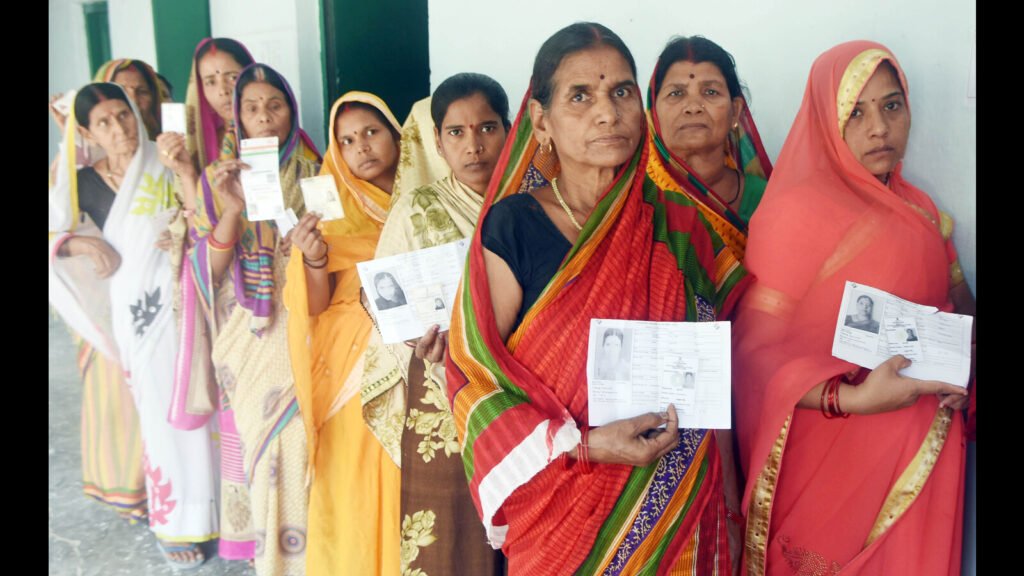
Bihar has managed to buck two political trends of the past decade. The first is of the Bharatiya Janata Party (BJP) having a chief minister (CM) in every state of the Hindi-speaking belt — Bihar stands out as the lone exception. The BJP may be the primary pole of national politics at present, but Bihar remains the one Hindi heartland state it has never won on its own. The second is that while most states in the region have delivered verdicts in which one party is always very close to the majority mark, government formation in Bihar has required the support of multiple parties. In fact, the last time any party netted a three-digit total in the 243-member assembly was in 2010, when the Janata Dal (United) or JD(U) won 115 seats, although it needed its alliance partner, the BJP, to form. thegovernment.

In Bihar, the BJP is a rising party (with 42.6% votes in the 110 seats it contested in 2020), yet it is also the state where the party is most constrained. It has organizational muscle, popular national leadership, a committed social base, and deep pockets, but it cannot fathom, just yet, charting an independent political journey in the state. Even when it won more seats than the JD(U) in 2020, it had to back Nitish Kumar for the CM’s office.
Will it change this time around? The seat sharing arrangements of the two rival camps — the National Democratic Alliance (NDA) of the BJP, JD (U), and other allies, and the Mahagathbandhan, comprising the Rashtriya Janata Dal (RJD), the Congress, and the Left parties, and a few others — indicates that it is unlikely that any party can cross the majority mark on its own. The BJP and JD(U) are only contesting 101 seats each, which complicates the possibility of a BJP CM even if the NDA crosses the majority mark.
In some ways, Bihar exposes the BJP’s deepest anxiety as it aspires to become the national hegemon. It seeks to escape Mandal politics, but Bihar’s social make up doesn’t offer it any easy route to do so. The BJP needs Kumar in Bihar to carry the alliance to victory. But, at the same time, it cannot fully rely on him. A recent comment by Union home minister Amit Shah suggesting that the CM would be selected after the polls by NDA legislators may have led to some murmurs, but Shah quickly underlined that the NDA was going into the elections under Kumar’s leadership. After all, Kumar’s party is a crucial ally at the Centre. Any move to undermine him at this stage may have ripple effects. So, the BJP must cautiously balance between its Bihar ambition and emerging politics.
This election season is not the time to solve this political Rubik’s cube. The party had tried this in the past and it did not yield desired results. It attempted to cut Kumar down to size in the run-up to the 2020 assembly election. The calculation was that Kumar’s decline would benefit the BJP. It precipitated a carefully crafted rebellion through Chirag Paswan whose party, the Lok Janshakti Party, mostly contested against JD(U) candidates and ensured their defeat.
It is true that Kumar’s popular appeal had lost much of its sheen by then. He was no longer hailed as “susashan (good governance) babu”, and had squandered much political goodwill by switching alliances multiple times. Now, there are worries about his health and, consequently, fitness to govern.
However, the BJP’s strategy of filling the political vacuum created by a weakened JD(U) hasn’t borne fruit. The BJP does not have state level leaders who can carry the campaign narrative on their own to the party’s advantage.
Kumar continues to remain the glue that binds the NDA’s coalition of extremes in Bihar. He still commands significant loyalty among the backward castes, which together form a very large chunk of the electorate. And, women voters connect with him due to his welfare measures over the last two decades, including the recent transfer of the 10,000 grant to lakhs of women in the state.
This social base of Kumar is precisely what frustrates the BJP’s ambitions. The BJP may lose a chunk of voters who see Kumar as the safer option if it alienates him. In the end, the 2025 Bihar election will be about the BJP’s ability to shield its allies even as it outgrows them. It would mean the BJP must internalize that even a resounding performance will not guarantee it the CM’s post right after the election. If it presses too hard, the cracks within the NDA coalition may become wide enough for the Opposition parties to cannibalise its voter base at the margins and ruin its chances to win office.
However, if it avoids this question, the long game may not necessarily turn out in its favour. The party risks being seen as a limited force among its more enthusiastic cadres, especially when Prashant Kishor’s Jan Suraaj Party is eyeing the same set of voters that the BJP had hoped to attract with. JD(U)’s decline.
Whatever the verdict, Bihar’s results will mark the beginning of a broader test for the BJP in the states. West Bengal, Tamil Nadu, Puducherry, Kerala and Assam will vote next year. The party has not been in office in any of these states ever, save Assam.
After the Lok Sabha jolt in June 2024, the BJP was able to retain office in Haryana and Maharashtra, defeated the Aam Aadmi Party in Delhi, but failed to unseat the Jharkhand Mukti Morcha in Jharkhand. In that sense, the assembly election in Bihar is another reminder that the states pose an entirely different set of political challenges even as a party consolidates its potential nationally.
Rahul Verma is associate professor of political science at the Shiv Nadar University, Chennai, and fellow, Center for Policy Research (CPR), New Delhi. The views expressed are personal




